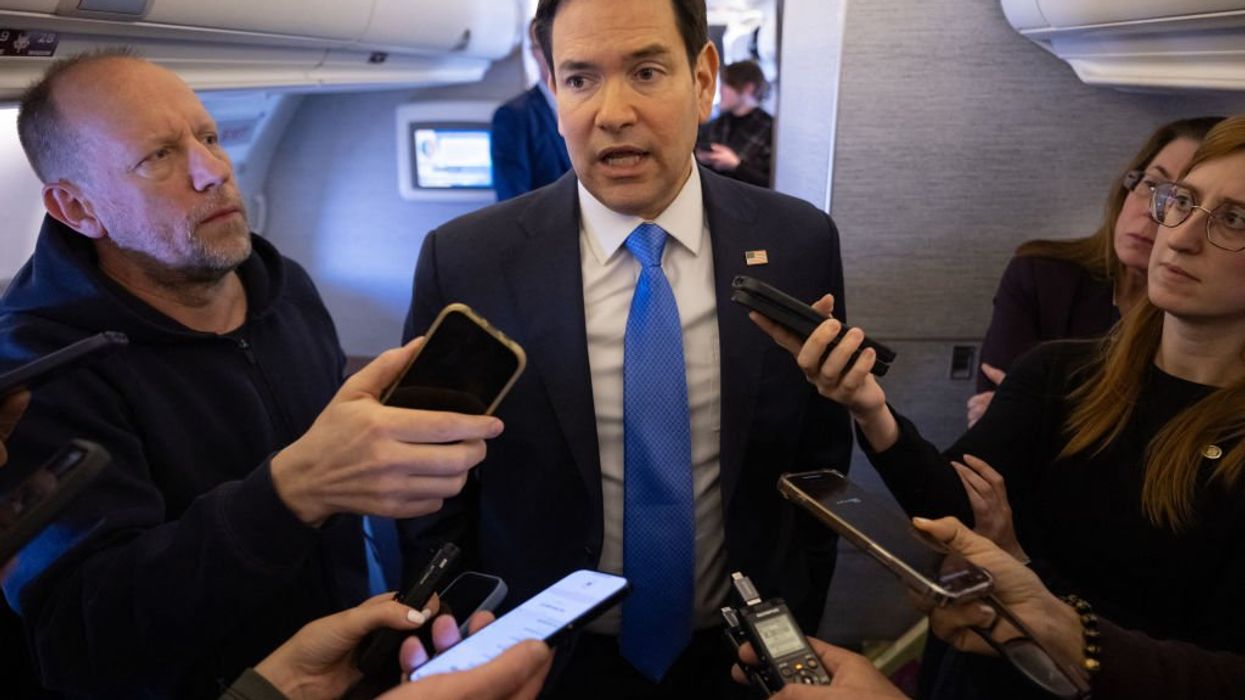
© 2025 Blaze Media LLC. All rights reserved.
Questionable spending of government grants has occurred for years on college campuses.
 President Obama shaking hands with students in the White House East Room after delivering a speech on student loans in June 2012 (AP Photo)
President Obama shaking hands with students in the White House East Room after delivering a speech on student loans in June 2012 (AP Photo)
While America continues to grapple with the consequences of the 2007 Mortgage Crisis, young Americans are about to step on the rake again with the next hazardous economic bubble: student loans.
To the millennial generation, college costs have made taking on debt an unfortunate rite of passage into adulthood. Higher education tuition –along with food, rent, books and other costs- are rapidly outpacing inflation. National outstanding student loan debt currently totals in the trillions.
The long-term financial strain in household terms is daunting. Borrowing $10,000 at the current federal unsubsidized Annual Percentage Rate (APR) of about 7 percent would leave students with a $20,000 bill over 10 years.
Full time in-state tuition at my alma mater George Mason University is $9,420 per year. If I was 18 years-old again and enrolled today to accept the unsubsidized federal loan, I would be $40,000 in tuition debt alone before I could even set foot (legally) in my first college bar.
This continuous cycle of federal loans to unqualified borrowers should sound like a familiar story. After a closer look at the rise of student loan debt, it’s clear that Americans haven’t learned the lessons of the 2007 mortgage crisis.
In an attempt to get every family into a “3 bed, 2 bath” house somewhere in the suburbs, the federal government promoted tremendously risky borrowing practices in the form of government-backed subprime mortgages.
The risk of these practices soon became reality. Home prices plummeted by almost 30 percent, adjustable mortgage rates skyrocketed, and millions of Americans went into delinquency. The resulting economic contraction put 9 million Americans out of work, many still to this day.
Today, the same morally hazardous borrowing pattern is playing out in the higher education market, with government-subsidized colleges and universities. Government subsidies are the reason why tuition costs are so inflated in the first place. Access to seemingly limitless government revenue allows universities to spend with reckless abandon.
Questionable spending of government grants has occurred for years on college campuses. Yet as states cut back on endowments in response to tough economic conditions, the burden of higher education’s spending addiction has been passed on to the students through tuition hikes.
There lays the bubble. In response to the tuition hikes, students aren’t paying out of pocket for their degrees. The increased costs transfer directly into higher loan debt- loans that are issued and backed entirely by the government.
Thus, colleges and universities have no incentive to rein in spending. Their government funding continues on, filtered through the middleman of the student.
Much like the housing bubble leading up to the mortgage crisis, this twisted system of spending and borrowing is quickly destabilizing. Borrowers and their respective student loan balances have increased almost 70 percent since 2004.
To make matters worse, graduates are increasingly unable to pay this money back. One third of borrowers are now in delinquency, a figure that is expanding rapidly.
Again, the mortgage crisis offers a lesson. Mortgage-backed securities collapsed the economy because the government assumed that the value of real-estate would never go down. Well it did, and the same thing is happening to college degrees.
The end result: universities are churning out more and more graduates with nowhere to go and no means to pay off their debt. To relieve graduates of financial strain, members of Congress and President Obama have discussed a simple forgive-and-forget strategy, where the loans seem to go poof! And disappear into the air.
This Band-Aid approach ignores the added taxes and borrowing required to cover the loss, and fails to address the underlying cause of the debt crisis in the first place.
Promising free money to universities and students alike without considering the consequences is a symptom, not a solution. Every dollar loaned, spent, or guaranteed by the government is a dollar that has been taxed away from a prospective employer.
The government needs to step back and let the market work. Without the inflation caused by “free” money from the government, prospective students and universities alike will return to making more careful investments they can actually afford.
Given enough time, the strain that the “free money” mentality places on the economy will be lifted, loans will slowly but surely be paid back, and the value of an education, at all levels, will return.
Let’s let the air out of this bubble, before we let it burst.
Patrick Hedger is a Policy Analyst at FreedomWorks, a grassroots service center to a community of 4 million activists nationwide who believe in individual freedom and constitutionally-limited government.
More Contributions From TheBlaze:
Want to leave a tip?
We answer to you. Help keep our content free of advertisers and big tech censorship by leaving a tip today.
Want to join the conversation?
Already a subscriber?
more stories
Sign up for the Blaze newsletter
By signing up, you agree to our Privacy Policy and Terms of Use, and agree to receive content that may sometimes include advertisements. You may opt out at any time.
© 2025 Blaze Media LLC. All rights reserved.
Get the stories that matter most delivered directly to your inbox.
By signing up, you agree to our Privacy Policy and Terms of Use, and agree to receive content that may sometimes include advertisements. You may opt out at any time.


